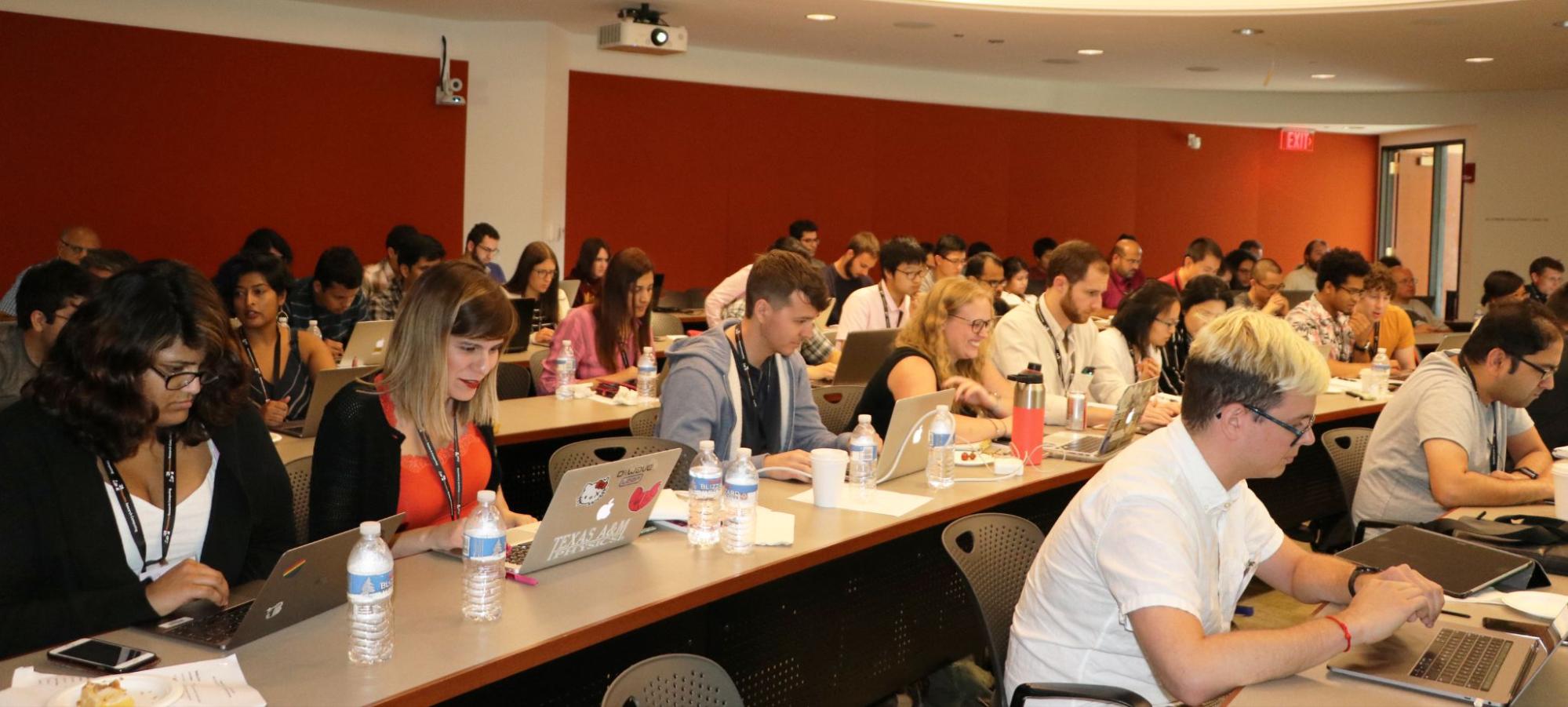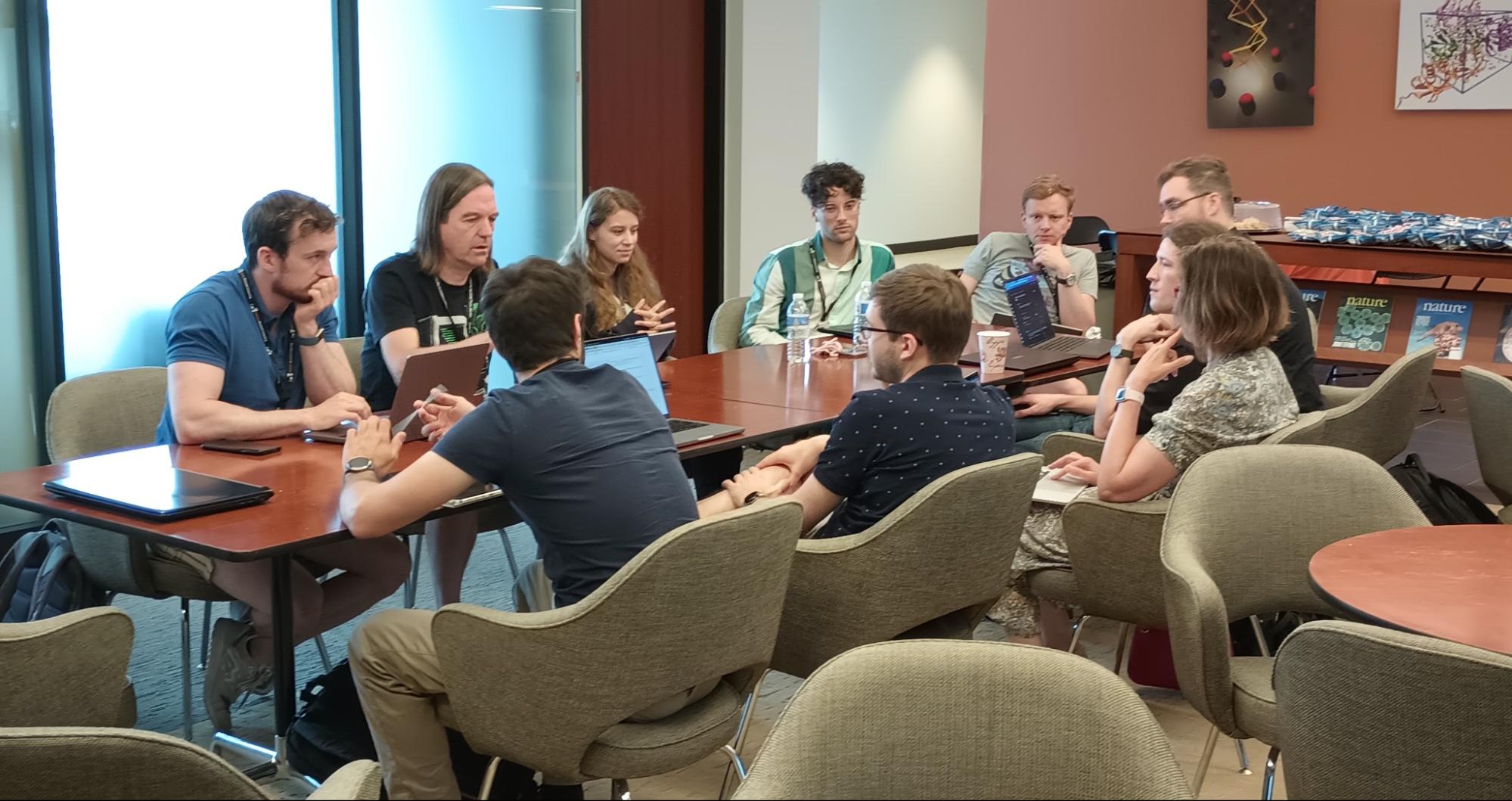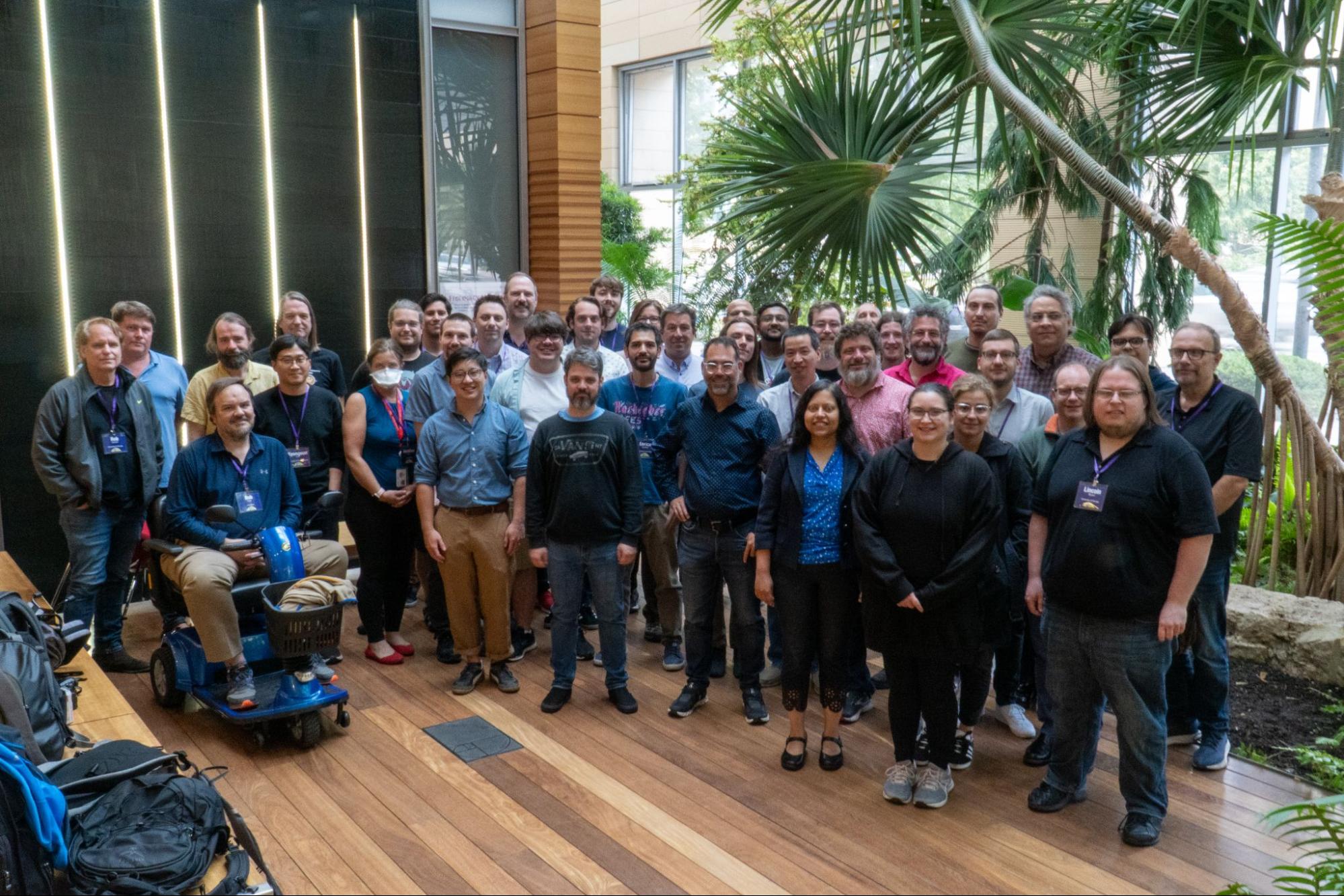This September marked the end of the first five years of research for the Institute for Research and Innovation in Software for High Energy Physics (IRIS-HEP). In mid-month, an international cohort of the software collaboration’s researchers and project team gathered in Madison, Wisconsin for an all-hands meeting. The congregation marked another exciting milestone for IRIS-HEP as well — the renewal of funding through a $25M award from the National Science Foundation for another five years of research.
“We are excited that the National Science Foundation, our proposal reviewers, and the particle physics community have recognized the significant progress we have made in the first five years and endorsed our plan for the next five years”, said Peter Elmer, a senior research physicist at Princeton and the principal investigator and Executive Director of IRIS-HEP. The IRIS-HEP software institute, headquartered at the Princeton Institute for Computational Science & Engineering at CERN.
IRIS-HEP received funding from the Office of Advanced Cyberinfrastructure and the Physics Division at the National Science Foundation for five years. The renewal of this funding represents a move into the “second phase” of the collaboration’s research, says Gordon Watts, co-principal investigator and the Deputy Executive Director for IRIS-HEP. At the all-hands meeting, the members of the collaboration discussed their plans for what will come next for IRIS-HEP.
Watts says in the first phase, there was a heavy emphasis on the “research” part of research and development. Now, “We’re going to try and shift the focus toward the developmental aspects,” says Watts. “We want to build communities around the software to try and make it sustainable.”
IRIS-HEP makes an impact beyond the LHC; the Institute provides key services for distributed high throughput computing through the OSG Consortium. Brian Bockelman, co-principal investigator of the project explains, “This way, the broader HEP community can benefit from the work done by the institute.”

School participants working on practical exercises during the CoDaS-HEP 2019 summer school at Princeton University. Credit: Floe Fusin-Wischusen, Princeton University.
Peter Onyisi, associate professor of Physics at the University of Texas Austin, who recently joined IRIS-HEP as a principal investigator, would like to see the collaboration work on ensuring that their software is easy for new users to get started with. The question, he says, is “How do we transition the software from essentially being a project that some R&D types are working on into something that’s really supported by the experiments?”
In phase two of IRIS-HEP, Onyisi hopes the funding will be used to ensure the software can be used by high energy experiments for decades and decades. “It’s not a project that’s being developed, but rather a project that’s being maintained by the community.”
“The IRIS-HEP project is developing the state-of-the-art cyberinfrastructure required to address the challenges of data-intensive scientific research at the High-Luminosity Large Hadron Collider at CERN and other planned high-energy physics experiments of the 2020s,” says Bogdan Mihaila, a program director in NSF’s Physics Division. “IRIS-HEP will make an important contribution to our understanding of the fundamental building blocks of matter and their interactions.”
“The amount of scientific data expected to be produced by the High-Luminosity Large Hadron Collider is staggering,” says Saul Gonzalez, director of NSF’s Physics Division, which supports the institute along with NSF’s Office of Advanced Cyberinfrastructure. “The innovative software and data analysis tools being developed by IRIS-HEP will allow researchers to find those ‘needles’ of discovery that unlock new understanding of our universe — and which would otherwise remain hidden in a haystack of data.”

A group of software developers discusses design options for the particle physics data science software ecosystem at the PyHEP.dev workshop at Princeton, in July, 2023. Credit: Jim Pivarski, Princeton University.
The current subawardees and collaborating institutions include the University of Wisconsin Madison, the University of Washington, Stanford University, the Morgridge Institute for Research, Inc., the University of Notre Dame, the University of Chicago, Indiana University, Cornell University, the University of Cincinnati, the University of California Berkeley, University of California at San Diego, the University of Nebraska Lincoln, the University of Texas at Austin, the University of Michigan and the University of Puerto Rico Mayaguez.
Facts & Figures and Key Accomplishments from 2018-2023
- Advanced Data Processing Algorithms: IRIS-HEP has pursued multiple R&D paths for a key pattern recognition challenge charged particles each year in a real-time environment. Initial software has been deployed to the current LHC data taking.
- Extreme Data Science: IRIS-HEP has played a key role in building a cutting edge High Energy Physics (HEP) community python ecosystem for data science had more than 40 active participants. LHC experiments are already using these tools to perform analysis for publication.
- Distributed Data Management: The institute is working to enable the LHC community to modernize how it moves data across the globe. IRIS-HEP spearheaded the migration from older, niche transfer protocols to using industry-standard HTTPS for data distribution.
- High Throughput Computing and Facilities: IRIS-HEP supports the services run by the OSG Consortium and used by the LHC. These services provide a backbone for today’s distributed high-throughput computing infrastructure and are evolving to prepare for the scale of tomorrow’s HL-LHC.
- Software Skills Training: More than 2000 people have participated in basic software development skills training events organized by IRIS-HEP and taught by more than 60 educators and more than 120 contributors since 2020. IRIS-HEP also sponsors the more advanced (in-person) Computational and Data Science for High Energy Physics (CoDaS-HEP) summer school, with typically 50 participants and 10 instructors per year, in 2019, 2022 and 2023.
- Community: IRIS-HEP plays a key role as intellectual hub for software efforts in the particle physics community: it has organized numerous community workshops which foster discussion, build collaborations and forge consensus around software efforts to meet the challenges of experimental particle physics in the coming years.
- IRIS-HEP Fellows: 122 students participated in the IRIS-HEP Fellowship program over the first 5 years connecting undergraduate and graduate students with mentors in the larger High Energy Physics (HEP) community and the Computational/Data Science community. The fellows spent several months working with mentors to build their skills while working on IRIS-HEP-relevant research software projects. A number of students from the program have gone on to continue their studies as graduate students in HEP and computer science.
- Outreach: IRIS-HEP supported and trained more than 60 high school teachers in the summer of 2023 in Coding Camps across the US including at Fermilab, the University of Alabama, Rice University, the University of Washington, and the University of Puerto Rico. The Coding Camps supported by IRIS-HEP began in the summer of 2022 with a single coding camp at FNAL with about ~25 teachers and has grown from there. Outside of the Coding Camps, IRIS-HEP trained over 110 teachers over the past few years .
